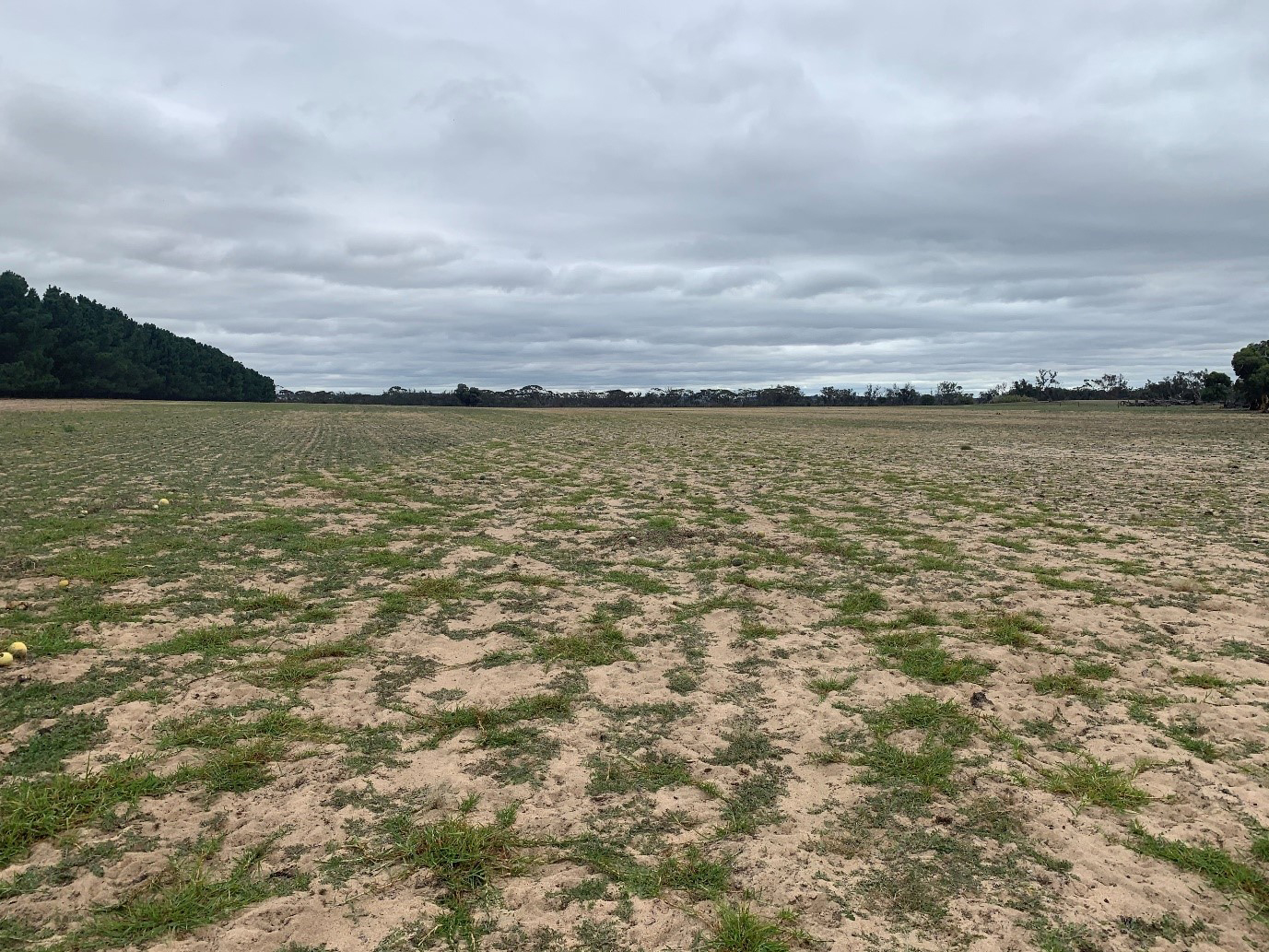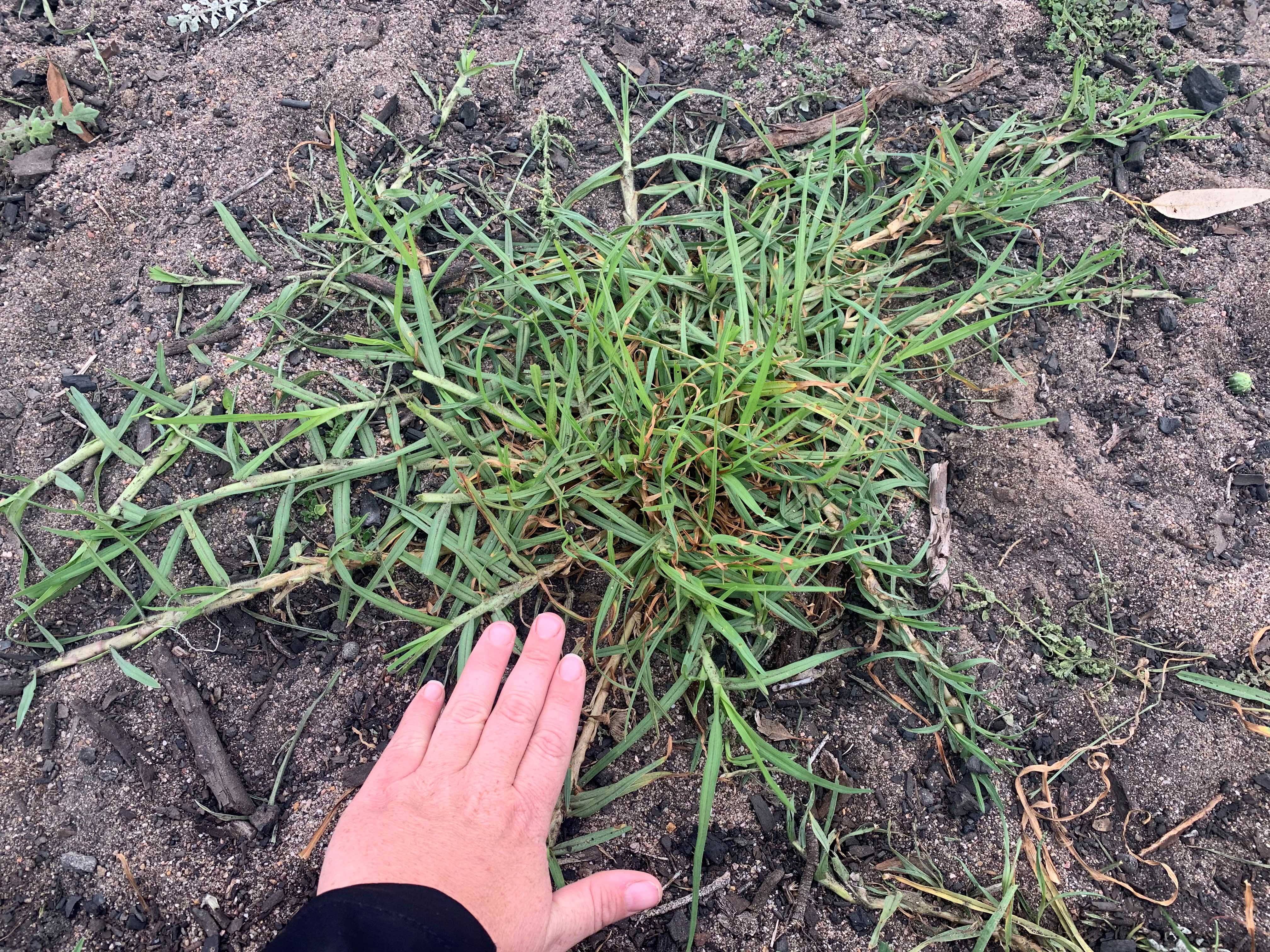Kikuyu is a perennial subtropical grass that is more often seen on the south coast of WA or as a suburban front lawn.
It has not been used in the Wheatbelt very much as most of the region is thought to be outside its range.
At Kane Page’s Brookton farm he is trialling Kikuyu as a grazing option on acidic and non-wetting deep yellow sands. A bare area right near the sheep yards provided an opportunity to try something different just to see how it would go.
Seeded in September the patch has been slow to show any results. Non-wetting soils and lack of rain meant in March there was very little growth and what was there was stunted and sporadic.
However with several good rainfall event since March today, the site is looking much better with the Kikuyu covering over 35% of the site. The coverage would have been better but the site has already supported a light grazing which reduced the coverage of the plants. With the recent rains, we expect to see marked improvement and growth over May.
Kane’s plan is to over-sow with serradella next February. This will continue to improve the soil, deliver nitrogen and establish a winter sheep feed while the Kikuyu is partially dormant.
Project advisor Phil Barrett-Lennard says the aim is to “Improve year-round productivity and groundcover on a troublesome deep sand soil type”
This work is part of our Optimising Fodder Options project that is working with mixed farmers to develop whole farm plans and supporting them to trial some different options to maximise groundcover over summer and provide opportunities to fill the feed gap.
We will continue to track progress on this alternative groundcover choice and we will continue to share results so the community can investigate whether it might work for them.


The project is supported by funding from the Australian Government’s National Landcare Program.


